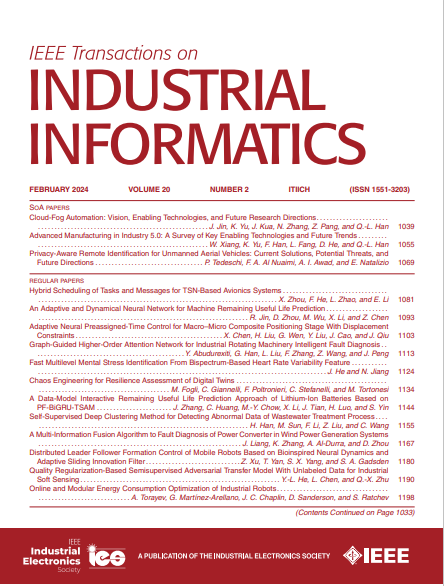针对多种网络威胁的无人机非合作编队跟踪:双网络方法
IF 9.9
1区 计算机科学
Q1 AUTOMATION & CONTROL SYSTEMS
引用次数: 0
摘要
在本文中,我们研究了存在多种网络威胁的无人驾驶飞行器(uav)编队跟踪问题。在这种情况下,无人机有私人的、潜在冲突的目标,它们的通信网络和本地反馈机制很容易受到恶意攻击者的破坏和窃听。为了解决这个现实世界的挑战,我们提出了一个基于双网络结构的控制方案。具体而言,我们构建了一个与物理层互连的虚拟孪生层,设计了一个弹性估计器,以加强威胁下无人机之间的信息交换。此外,通过耦合双层状态和时变信号作为掩模,实现了对关键信息的隐私保护。此外,利用弹性估计器提供的可靠数据,我们设计了一个基于梯度优化的协作控制器来更新无人机的位置。利用李雅普诺夫理论,证明了所有无人机的位置收敛于动态纳什均衡。最后,我们进行了实验研究来验证所提出的控制方案的有效性。本文章由计算机程序翻译,如有差异,请以英文原文为准。
Noncooperative Formation Tracking of UAVs Against Multiple Cyber-Threats: A Twin-Network Approach
In this article, we investigate the problem of unmanned aerial vehicles (UAVs) formation tracking in the presence of multiple cyber-threats. In this scenario, UAVs have private, potentially conflicting objectives, and their communication networks and local feedback mechanisms are vulnerable to sabotage and eavesdropping by malicious attackers. To address this real-world challenge, we propose a control scheme based on a twin-network structure. Specifically, we construct a virtual twin layer interconnected with the physical layer to design a resilient estimator that fortifies information exchange among UAVs under threats. In addition, by coupling the states from the twin layer and time-varying signals as masks, we achieve privacy protection for critical information. Furthermore, leveraging reliable data provided by the resilient estimator, we design a cooperative controller based on gradient-optimization to update the UAVs' positions. Using Lyapunov theory, we prove that the position of all UAVs converge to a dynamic Nash equilibrium. Finally, we conduct experimental studies to validate the effectiveness of the proposed control scheme.
求助全文
通过发布文献求助,成功后即可免费获取论文全文。
去求助
来源期刊

IEEE Transactions on Industrial Informatics
工程技术-工程:工业
CiteScore
24.10
自引率
8.90%
发文量
1202
审稿时长
5.1 months
期刊介绍:
The IEEE Transactions on Industrial Informatics is a multidisciplinary journal dedicated to publishing technical papers that connect theory with practical applications of informatics in industrial settings. It focuses on the utilization of information in intelligent, distributed, and agile industrial automation and control systems. The scope includes topics such as knowledge-based and AI-enhanced automation, intelligent computer control systems, flexible and collaborative manufacturing, industrial informatics in software-defined vehicles and robotics, computer vision, industrial cyber-physical and industrial IoT systems, real-time and networked embedded systems, security in industrial processes, industrial communications, systems interoperability, and human-machine interaction.
 求助内容:
求助内容: 应助结果提醒方式:
应助结果提醒方式:


